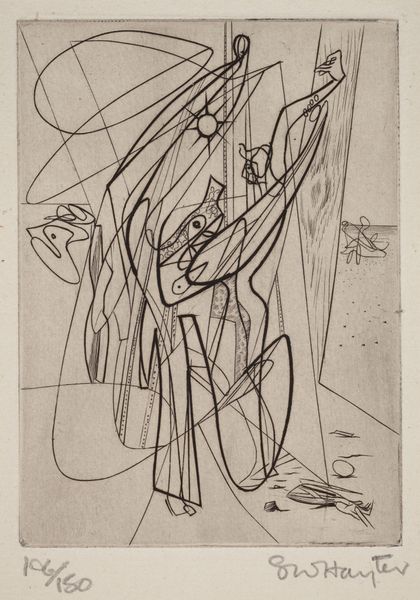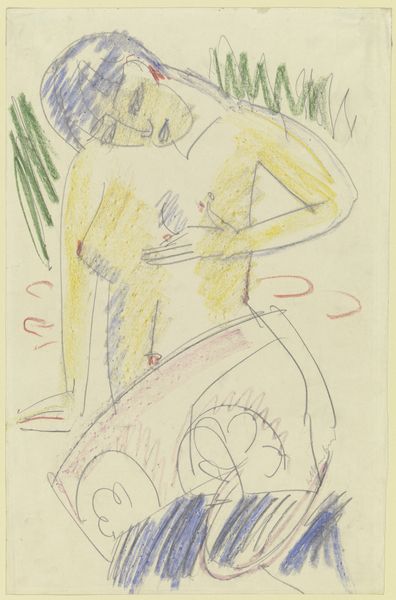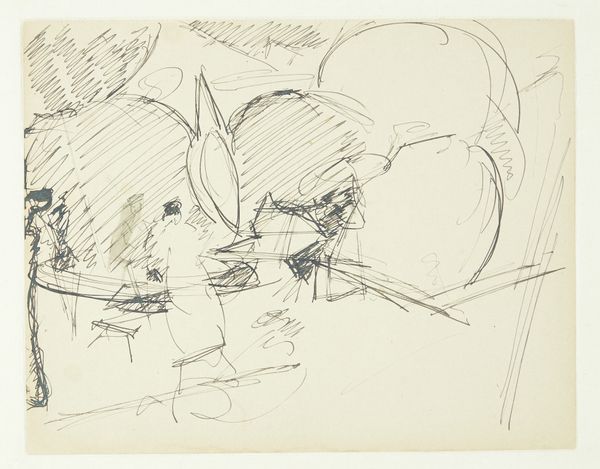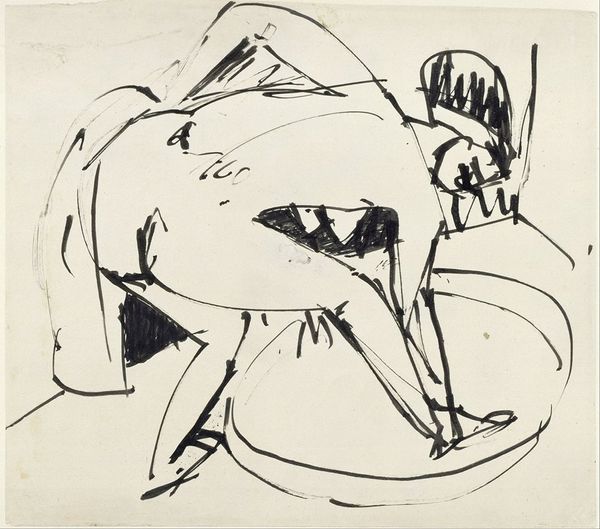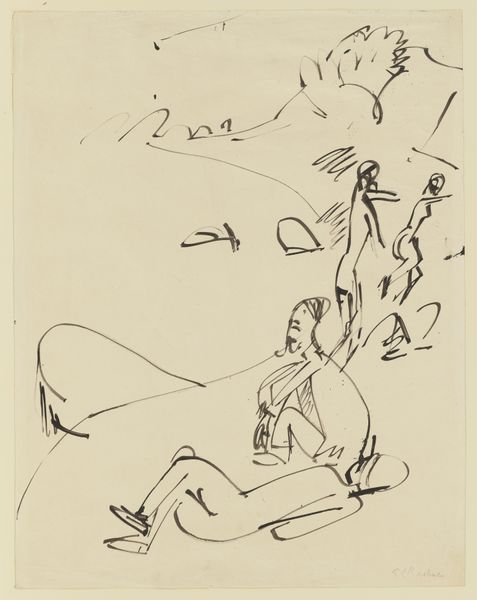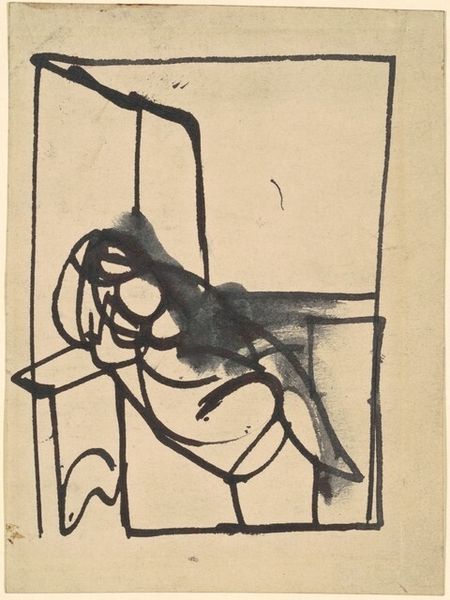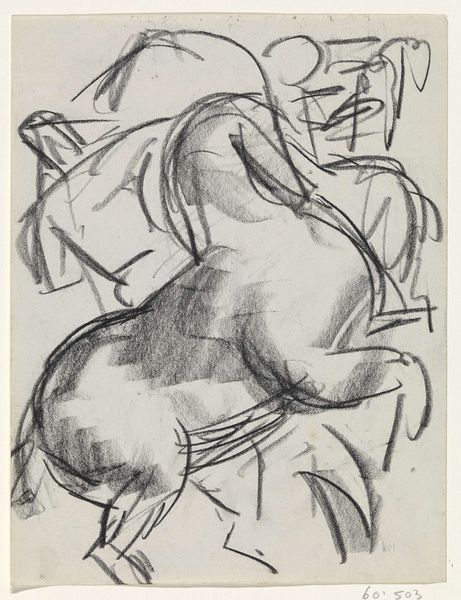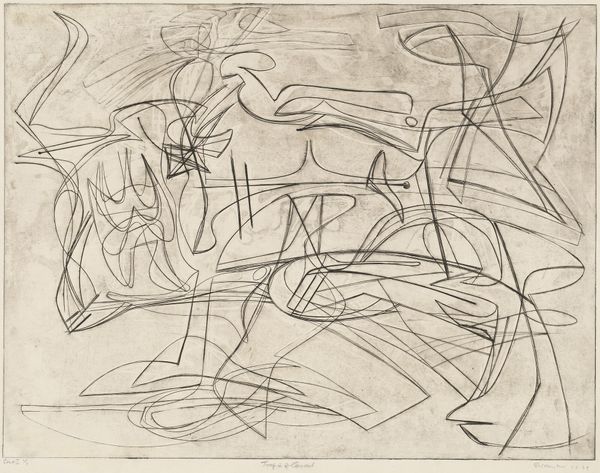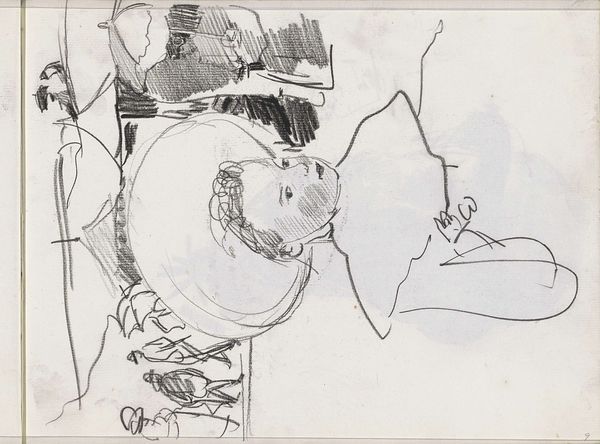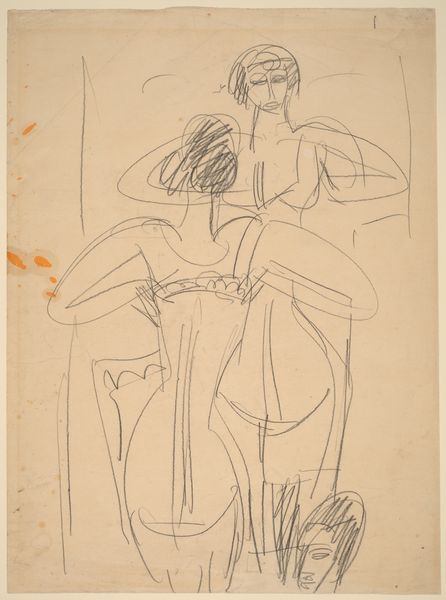
drawing, paper, chalk, charcoal
#
drawing
#
ink drawing
#
pen sketch
#
figuration
#
paper
#
personal sketchbook
#
expressionism
#
chalk
#
charcoal
#
nude
Copyright: Public Domain
Editor: This is Ernst Ludwig Kirchner's "Sitting female nude," from 1913, rendered in chalk and charcoal on paper. It feels incredibly raw and immediate, almost like a glimpse into his sketchbook. What do you see in this piece? Curator: From a materialist perspective, I'm drawn to the starkness of the chalk and charcoal. Look at the labor involved – the repeated strokes, the conscious act of mark-making. This isn’t just representation; it's about Kirchner's physical interaction with these base materials to produce an image. Editor: It does feel very tactile. The roughness of the charcoal contrasts so strongly with the smooth paper. Do you think the choice of materials was deliberate? Curator: Absolutely. Kirchner was part of Die Brücke, a group interested in challenging academic traditions. Eschewing oil paint for readily available materials like charcoal connects him to the everyday, blurring the lines between "high art" and common materials available for all to use. The rapid strokes even feel anti-academic. Editor: So, it's not just about the figure, but also about demystifying the art-making process itself? Curator: Precisely. And consider the paper – its relative cheapness allowed for experimentation and the capture of fleeting moments. It speaks to the artist’s access and affordability within the artistic marketplace of the time. Editor: That's a great point! I hadn't considered the social implications of the materials themselves. It does make me think differently about the artist's intention and engagement. Curator: By focusing on process, materials, and access, we can better understand not only Kirchner’s practice, but also his relationship to the art world and broader society. Editor: I see the expressive use of those simple, common tools and how they spoke volumes of that era. Thanks, this was insightful.
Comments
No comments
Be the first to comment and join the conversation on the ultimate creative platform.
